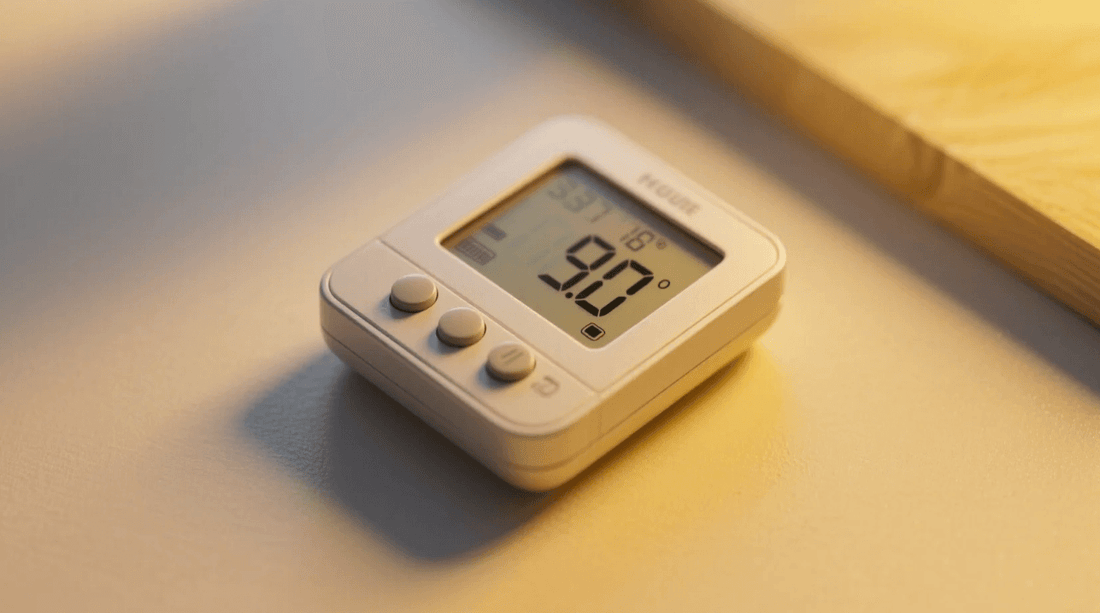
Understanding a thermostat for house
Share
In a connected home, a well-chosen thermostat for house turns heating and cooling from a guessing game into a data-driven, voice-controlled routine. Smart models learn your schedule, trim 8 – 20 % off HVAC bills, and even help shrink a home’s carbon footprint. EdgeAnt’s Wi-Fi lineup packs those benefits into an affordable, DIY-friendly package—making efficiency upgrades far easier to start. Below you’ll find a deep dive into how these devices work, where they save money, what to look for, and how EdgeAnt positions its products.
Smart thermostats replace the mechanical dial with a Wi-Fi brain that measures temperature, occupancy and user habits. They can be adjusted from anywhere, react to voice commands, and—after a short learning period—run the HVAC system only when it is truly needed. ENERGY STAR calculates average bill cuts of 8 % (≈ US $50/yr).Additional Department of Energy research shows a manual 7–10 °F setback for eight hours yields up to 10 % savings even without learning algorithms.

Core hardware
Control head with touch display and Wi-Fi radio.
Relay baseplate that switches 24 V HVAC signals.
On-board sensors for temperature, humidity and sometimes motion.
Optional remote sensors for room-by-room balance.
Smarter software
Algorithms compare indoor readings with outdoor weather, predict comfort needs, and refine schedules automatically. Occupancy is verified through geofencing—as a 2024 field study confirmed, geofence-driven control can cut runtime while maintaining comfort.

Why upgrade the thermostat for house
Energy and cost impact
Field and lab work show 8–20 % HVAC savings once smart scheduling is activated.A long-term Texas test added that occupancy-centric logic preserved comfort and slashed cooling demand during peak hours.
Comfort & convenience
Remote changes via phone or voice keep temperatures on point without trips to the hallway. Reviewers praise geofencing for warming a home before commuters arrive.
Sustainability
Project Drawdown ranks smart thermostats among top home retrofits; widespread adoption could eliminate gigatons of CO₂ by mid-century.
EdgeAnt’s marketing angle
EdgeAnt positions its EHVC-series as the “value choice” thermostat for house:
| Model | HVAC support | Top feature | Street price |
|---|---|---|---|
| EHVC 513 | Conventional & heat-pump (C-wire adapter in box) | 7-day/4-period schedule | US $75 |
| EHVC 523 | Adds humidity display & finer temp steps | Voice + app | US $95 |
| C-Wire Bundle | Same hardware + power-extender kit | Simplifies two-wire installs | US $115 |
Product pages highlight filter reminders, child lock, and 2.4 GHz Wi-Fi setup in <30 min. Compatibility checkers and manuals are linked on the EdgeAnt site for pre-purchase confidence.
Positioning versus giants
Consumer Reports notes many leading thermostats exceed US $150 – $250.EdgeAnt’s lower entry cost undercuts Nest or Ecobee while still offering Alexa/Google control via the Smart Life skill.
How the devices work inside a smart home
Voice & app ecosystem
After Wi-Fi pairing, the unit is discovered automatically by Alexa or Google Home; voice commands (“Raise temp two degrees”) are handled instantly. EdgeAnt’s thermostat is shown to work without an extra hub through Tuya cloud.
Learning & automation
Adaptive modes observe adjustments and replicate them, gradually reducing manual tweaks. Occupancy data—from motion or phone location—is blended into set-points, a method validated by recent occupant-centric thermostat studies.
Matter and forward-compatibility
Matter is emerging as a unifying protocol; many 2025 thermostats promise firmware updates for certification. While EdgeAnt has not announced Matter yet, its Tuya base can bridge to Matter ecosystems as standards mature.
Installation: DIY or pro?
Consumer Reports’ step-by-step guide shows most homeowners can swap a thermostat in under an hour—provided a C-wire is present or a power extender is added. EdgeAnt ships the adapter in the retail box, reducing callbacks.
Safety tip: Always cut HVAC power at the breaker, label each wire, and photograph the old connections before removal.
Data privacy & security considerations
Only 13 % of buyers review a thermostat’s privacy policy, yet the device can reveal daily routines.News coverage reminds us that microphones or motion sensors in smart homes collect detailed data. EdgeAnt encrypts cloud traffic and allows users to disable remote logging in the Smart Life app, mitigating risk.
Cost-benefit snapshot
Up-front cost: ~US $75 – $115 (EdgeAnt) or $130+ for big brands.
Annual savings: $50–$180, depending on climate and HVAC type.
Payback window: 9–24 months for most households. Industry analyses echo DOE numbers.
Future trends
Research points toward AI predicting failures before they happen and dynamic-pricing APIs that pre-cool homes when electricity is cheap.Blockchain-based demand-response pilots could even pay consumers for flexibility.